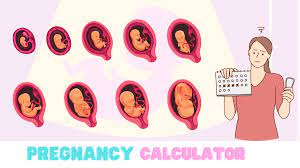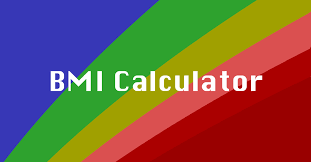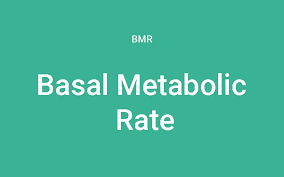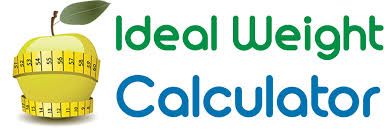Are you trying to determine the most accurate estimation of your conception date? Our Pregnancy Conception Date Calculator is here to help! By using this innovative tool, you can easily calculate your estimated date of conception based on the information you provide. Additionally, we offer insights into conception based on due date, ensuring a comprehensive understanding of your pregnancy timeline
Pregnancy Conception Calculator
[ez-toc]
The Importance of Last Menstrual Period, Due Date, and Ultrasound
Pregnancy is an exciting journey filled with anticipation, questions, and a lot of guesswork. One of the most important aspects of pregnancy is keeping track of crucial dates and milestones, such as the last menstrual period, due date, and the use of ultrasounds for monitoring fetal growth. In this article, we’ll explore these topics and learn about their importance in ensuring a healthy pregnancy.
Last Menstrual Period: The Starting Point of Your Pregnancy Journey
The last menstrual period (LMP) is a significant date in any pregnancy. It refers to the first day of your most recent menstrual cycle before becoming pregnant. Knowing your LMP helps healthcare providers estimate your due date and monitor your pregnancy’s progress. Additionally, it provides a baseline for determining whether your pregnancy is progressing as expected or if there may be potential complications.
How to Calculate Your Due Date
Your due date, also known as the estimated date of delivery (EDD), is the approximate day your baby is expected to be born. The most common method for calculating your due date is Naegele’s rule, which adds 280 days (40 weeks) to the first day of your LMP. However, it is essential to remember that only a small percentage of women deliver on their actual due date, and it is normal for babies to be born within two weeks before or after the EDD.
The Role of Ultrasound in Pregnancy
Ultrasound is an imaging technique that uses high-frequency sound waves to create images of your baby and the structures within your uterus. It is a safe and non-invasive tool that plays a crucial role in prenatal care, offering numerous benefits:
Confirming pregnancy and determining the gestational age: Early ultrasounds help confirm the pregnancy and provide a more accurate estimation of the baby’s age, especially if the LMP is unknown or irregular.
Monitoring fetal growth and development: Regular ultrasounds allow healthcare providers to track your baby’s growth, ensuring they are developing at the appropriate rate.
Detecting potential complications: Ultrasound can identify potential issues, such as placenta previa, umbilical cord complications, or congenital anomalies, enabling early intervention if needed.
Determining the baby’s position and presentation: Ultrasound can help determine if the baby is in the correct position for birth or if a breech presentation may require a cesarean section.
Assessing amniotic fluid levels: Monitoring amniotic fluid levels helps ensure a healthy environment for your baby and can detect potential concerns, such as oligohydramnios or polyhydramnios.
Understanding the significance of the last menstrual period, due date, and the role of ultrasound in pregnancy is essential for expecting parents. Keeping track of these dates and milestones can help ensure a healthy pregnancy and prepare you for the exciting journey ahead. Remember to consult with your healthcare provider regularly to address any concerns or questions you may have throughout your pregnancy.
Fertilization, Conception, and Pregnancy
The journey from fertilization to pregnancy is a fascinating and intricate process that results in the creation of new life. It involves a series of perfectly timed events, ultimately leading to the development of a fetus inside the mother’s womb. In this article, we’ll explore the stages of fertilization, conception, and pregnancy, providing insights into the miraculous world of human reproduction.
Fertilization: The Union of Sperm and Egg
Fertilization is the initial stage of human reproduction, where a sperm cell from the male merges with an egg cell (ovum) from the female. This fusion occurs in the woman’s fallopian tubes, typically within 12 to 24 hours after ovulation. Upon successful fertilization, the sperm’s genetic material combines with the egg’s, creating a single cell called a zygote, which contains the full set of chromosomes necessary for the development of a new individual.
Conception: From Zygote to Embryo
Conception is the process of a fertilized egg implanting into the lining of the uterus, marking the beginning of pregnancy. After fertilization, the zygote undergoes several divisions, forming a multicellular structure called a blastocyst. This journey from the fallopian tube to the uterus takes around five days. Once the blastocyst reaches the uterus, it embeds itself into the uterine lining, a process known as implantation. This crucial stage usually occurs 6 to 10 days after ovulation.
Pregnancy: The Stages of Fetal Development
Pregnancy is the period from conception to birth, lasting approximately 40 weeks. It is typically divided into three trimesters, each with its unique developmental milestones:
First Trimester (Weeks 1-12): During this period, the fertilized egg rapidly develops into an embryo, forming critical structures such as the neural tube, heart, and limbs. By the end of the first trimester, the embryo begins to resemble a tiny human and is now referred to as a fetus.
Second Trimester (Weeks 13-27): The fetus continues to grow and develop during this trimester, with vital organs maturing and external features becoming more defined. Expectant mothers may begin to feel fetal movements, known as “quickening,” during this time.
Third Trimester (Weeks 28-40): The final trimester is marked by significant fetal growth and further development of organs and systems. The fetus gains weight rapidly, and its lungs mature in preparation for birth. In the weeks leading up to delivery, the baby moves into the head-down position, getting ready for labor.

Supporting a Healthy Pregnancy
To ensure the best possible outcome for both mother and baby, it is essential to maintain a healthy lifestyle throughout pregnancy. This includes eating a balanced diet, getting regular prenatal care, staying active, avoiding harmful substances, and managing stress levels. Expectant mothers should consult with their healthcare providers for personalized advice and recommendations.
The journey from fertilization to conception and pregnancy is a remarkable process that highlights the complexity and beauty of human life. Understanding these stages can help expectant parents appreciate the miracle of life and better prepare for the exciting adventure of parenthood. Stay informed and work closely with your healthcare provider to ensure a healthy and successful pregnancy.
First Signs of Pregnancy: Recognizing the Early Symptoms
Every pregnancy is unique, and the first signs of pregnancy can vary from woman to woman. Some may experience early symptoms within days of conception, while others may not notice any changes for weeks. Recognizing the early signs of pregnancy can help you determine if you may be expecting and prepare for the journey ahead. In this article, we will explore the most common first signs of pregnancy to help you identify the early clues.
Missed Period: The Most Telling Sign
A missed period is often the first and most noticeable sign of pregnancy. If you have a regular menstrual cycle and miss your period, it could indicate that you are pregnant. However, it’s essential to consider that factors such as stress, illness, or changes in weight can also affect your menstrual cycle. To confirm pregnancy, take a home pregnancy test or consult with a healthcare professional.
Early Pregnancy Symptoms: What to Look For
While a missed period is the most telling sign, several other early symptoms can hint at a possible pregnancy. These symptoms may appear as early as one to two weeks after conception:
Fatigue: Hormonal changes during early pregnancy can cause increased tiredness and exhaustion.
Breast changes: Swollen, tender, or sore breasts are common early pregnancy symptoms due to hormonal fluctuations.
Nausea and vomiting: Often referred to as “morning sickness,” nausea and vomiting can occur at any time of the day and typically start around the sixth week of pregnancy.
Increased urination: Rising levels of the hormone human chorionic gonadotropin (hCG) can lead to increased urination during early pregnancy.
Food cravings or aversions: Some women may experience cravings for specific foods or develop aversions to certain smells and tastes early in pregnancy.
Mood swings: Emotional changes and mood swings can occur as a result of hormonal shifts during early pregnancy.
Bloating and cramping: Hormonal changes can cause bloating and mild cramping, often mistaken for premenstrual symptoms.
Light spotting: Implantation bleeding, a light spotting that occurs when the fertilized egg attaches to the uterine lining, can be an early sign of pregnancy.
Confirming Your Pregnancy
If you suspect you may be pregnant based on the early signs and symptoms, the next step is to confirm your pregnancy. Home pregnancy tests can provide accurate results as early as the first day of your missed period. For the most reliable results, follow the test instructions carefully and consider taking the test first thing in the morning when hCG levels are the highest. To obtain a definitive confirmation, consult with a healthcare professional for a blood test or ultrasound.
Recognizing the first signs of pregnancy can help you identify a possible pregnancy and take the necessary steps to ensure a healthy journey ahead. If you suspect you may be pregnant, take a home pregnancy test or consult with a healthcare provider for confirmation. Remember, every pregnancy is different, and symptoms can vary. Stay informed, and work closely with your healthcare provider to ensure a healthy and successful pregnancy.
Estimated date of conception based on LMP
During pregnancy, understanding essential dates such as the last menstrual period (LMP) and the estimated date of conception is crucial for tracking your baby’s development and ensuring a healthy pregnancy. In this article, we will explore the significance of LMP and provide guidance on estimating the date of conception based on this critical milestone.
The Importance of Last Menstrual Period
The last menstrual period (LMP) is the first day of your most recent menstrual cycle before becoming pregnant. Knowing your LMP helps healthcare providers estimate your due date and monitor your pregnancy’s progress. Additionally, it provides a baseline for determining whether your pregnancy is progressing as expected or if there may be potential complications.
Estimating the Date of Conception Based on LMP
To estimate the date of conception based on LMP, you first need to understand the concept of ovulation. Ovulation is the process by which a mature egg is released from the ovary, typically occurring around 14 days before the start of the next menstrual period. The date of conception usually falls within the fertile window, which is the period when the egg is most likely to be fertilized by sperm. This window typically spans from five days before ovulation to one day after ovulation.
To estimate the date of conception, follow these steps:
- Determine the date of your LMP.
- Add 14 days (assuming a 28-day menstrual cycle) to the date of your LMP to estimate the date of ovulation.
- Consider the fertile window, which is typically five days before ovulation to one day after ovulation.
- The estimated date of conception falls within this fertile window.
Keep in mind that these calculations are based on a regular 28-day menstrual cycle. If your cycle is irregular or varies in length, the estimation may be less accurate.
Estimated date of conception based on Ultrasound
Understanding crucial dates during pregnancy, such as the estimated date of conception, is essential for tracking your baby’s development and ensuring a healthy pregnancy. While the last menstrual period (LMP) can provide a useful baseline, ultrasounds offer a more accurate approach to determining the date of conception. In this article, we will explore the benefits and accuracy of ultrasound-based conception date estimation and how it can enhance your pregnancy experience.
The Role of Ultrasound in Estimating Conception Date
Ultrasound is an imaging technique that uses high-frequency sound waves to create images of your baby and the structures within your uterus. It is a safe and non-invasive tool that plays a crucial role in prenatal care. One of its key benefits is the ability to determine the gestational age of your pregnancy more accurately than using LMP alone, especially if you have an irregular menstrual cycle or are uncertain of your LMP.
How Ultrasound Estimates Conception Date
Early ultrasounds, performed within the first trimester, are the most accurate for determining the gestational age and estimating the date of conception. During an ultrasound, the sonographer or healthcare provider measures various aspects of your baby’s development and compares them to established growth charts. Key measurements and markers include:
Crown-Rump Length (CRL): This measurement represents the distance between the top of your baby’s head (crown) and their bottom (rump). The CRL is particularly accurate for estimating gestational age during the first trimester.
Gestational Sac Size: The gestational sac is the fluid-filled structure that houses your developing baby. Measuring the size of the sac can help estimate gestational age, although it is less accurate than CRL measurements.
Fetal Anatomy: As your baby grows, specific anatomical features and developmental milestones can help estimate gestational age, such as the presence of a heartbeat, limb development, and organ formation.
Based on these measurements and developmental markers, your healthcare provider can calculate the gestational age of your pregnancy and estimate the date of conception.
The Accuracy of Ultrasound-Based Conception Date Estimation
The accuracy of ultrasound-based conception date estimation depends on the stage of pregnancy and the quality of the ultrasound images. In general, early first-trimester ultrasounds are considered the most accurate, with an error margin of approximately 3 to 5 days. As the pregnancy progresses, the error margin increases due to variations in fetal growth rates.
The Benefits of Ultrasound-Based Conception Date Estimation
Estimating the date of conception using ultrasound offers several benefits:
Enhanced accuracy: Ultrasound provides a more precise estimation, especially for women with irregular menstrual cycles or uncertain LMPs.
Confirmation of pregnancy: Ultrasound can confirm pregnancy and determine whether it is developing within the uterus, ruling out ectopic pregnancies.
Monitoring fetal growth: Regular ultrasounds allow healthcare providers to track your baby’s growth, ensuring they are developing at the appropriate rate.
Detection of potential complications: Ultrasound can identify potential issues, such as congenital anomalies or placental problems, enabling early intervention if needed.
Conception based on due date
Understanding the estimated date of conception is vital for tracking your baby’s development and ensuring a healthy pregnancy. While methods like last menstrual period (LMP) and ultrasound can help determine the date of conception, calculating it based on your due date is another useful approach. In this article, we will explore how to estimate the date of conception using your due date and the importance of this information in monitoring your pregnancy journey.
Due Date: A Central Point in Your Pregnancy Timeline
The due date, also known as the estimated date of delivery (EDD), is an approximate date when your baby is likely to be born. This date plays a central role in prenatal care, as it helps healthcare providers monitor your baby’s growth, plan necessary tests, and anticipate any potential complications. By calculating the date of conception based on your due date, you can gain valuable insights into your pregnancy’s timeline.
Estimating Conception Date Using Your Due Date
To estimate the date of conception based on your due date, you need to consider the average length of a pregnancy, which is typically 40 weeks or 280 days from the first day of your last menstrual period (LMP). However, conception usually occurs around two weeks after the LMP, which means that the average gestation period from conception to birth is 38 weeks or 266 days.
To estimate the date of conception using your due date, follow these steps:
- Determine your due date, either provided by your healthcare provider or calculated using an online due date calculator.
- Count back 266 days (38 weeks) from your due date to estimate the date of conception.
Keep in mind that these calculations are based on averages, and individual factors such as cycle length and the exact date of ovulation can impact the accuracy of the estimation.
Pregnancy Conception Date Calculator
A pregnancy conception date calculator is an invaluable tool for estimating the date of conception and understanding the timeline of your pregnancy. This handy online tool can help you determine the likely date of conception based on your last menstrual period (LMP) or due date, providing insights into your baby’s development and your pregnancy progress. In this article, we will explore the benefits and usage of a pregnancy conception date calculator and how it can enhance your pregnancy experience.
The Purpose of a Pregnancy Conception Date Calculator
A pregnancy conception date calculator serves several purposes:
- Estimating the date of conception: By entering the date of your LMP or due date, the calculator can estimate the likely date of conception.
- Understanding your pregnancy timeline: Knowing the estimated conception date helps you better understand your pregnancy’s progress and your baby’s development.
- Planning prenatal care: Having a clear idea of your pregnancy timeline allows you to schedule prenatal appointments, tests, and ultrasounds at appropriate times.
How to Use a Pregnancy Conception Date Calculator
Using a pregnancy conception date calculator is simple and straightforward. Follow these steps:
- Access an online pregnancy conception date calculator from a reputable source, such as a healthcare organization or pregnancy-related website.
- Enter the required information, which may include your LMP, average menstrual cycle length, or due date.
- Click “Calculate” or the equivalent button to generate the estimated conception date.
Keep in mind that the accuracy of the estimated conception date depends on the accuracy of the information you provide, and individual factors such as irregular menstrual cycles and ovulation variations can affect the results.
A pregnancy conception date calculator is a valuable tool for estimating the date of conception and gaining insights into your pregnancy timeline. However, it’s important to consider the limitations of this estimation method and consult with your healthcare provider for a more accurate assessment, such as an ultrasound. Stay informed and work closely with your healthcare provider to ensure a healthy and successful pregnancy.
Can the pregnancy conception date calculator be wrong?
While pregnancy conception date calculators are helpful tools for estimating the date of conception, it’s essential to understand their limitations and the factors that can impact their accuracy. In this article, we will examine the potential inaccuracies of pregnancy conception date calculators and discuss alternative methods to obtain a more precise conception date.
Factors Impacting the Accuracy of Pregnancy Conception Date Calculator
Several factors can influence the accuracy of a pregnancy conception date calculator, including:
- Menstrual cycle length: Conception date calculators often assume an average menstrual cycle length of 28 days. If your cycle is shorter or longer than this average, the calculator’s estimation may be inaccurate.
- Irregular cycles: Women with irregular menstrual cycles may find that conception date calculators provide less accurate results due to the unpredictable nature of their cycles.
- Ovulation variations: Ovulation timing can vary from cycle to cycle and may not necessarily occur on the 14th day of the menstrual cycle, as often assumed by conception date calculators.
- The fertile window: The fertile window typically spans from five days before ovulation to one day after ovulation. Conception can occur on any of these days, making it challenging to pinpoint the exact date based on the calculator’s results.
- Human error: Providing incorrect information, such as an inaccurate LMP or due date, can impact the calculator’s precision.
Alternative Methods for a More Accurate Conception Date
While pregnancy conception date calculators can provide a helpful starting point, other methods can help obtain a more accurate conception date:
- Ultrasound: Early first-trimester ultrasounds are considered the most precise method for determining gestational age and estimating the date of conception. Measurements such as crown-rump length (CRL) and gestational sac size can help your healthcare provider calculate your baby’s gestational age more accurately.
- Basal body temperature (BBT) charting: Tracking your basal body temperature can help identify the date of ovulation, allowing you to estimate the date of conception more accurately.
- Ovulation predictor kits (OPKs): Using ovulation predictor kits can help you pinpoint the date of ovulation, providing a more accurate estimation of the conception date.
- Fertility awareness methods (FAM): Fertility awareness methods involve tracking your menstrual cycle, cervical mucus, and basal body temperature to identify your fertile window and estimate the conception date more accurately.
The Role of Healthcare Providers in Determining Conception Date
Consulting with your healthcare provider is crucial for obtaining the most accurate estimation of your conception date. Your healthcare provider can use a combination of methods, such as ultrasound, to determine the gestational age of your pregnancy and estimate the date of conception. They can also provide guidance on tracking your menstrual cycle and ovulation, offering insights into your unique fertility patterns.
Frequently Asked Questions (FAQ)
1. What is a Pregnancy Conception Date Calculator?
A Pregnancy Conception Date Calculator is a tool that helps estimate the date of conception, which is when fertilization of the egg by sperm occurs, leading to pregnancy. It provides insights into when a pregnancy likely began.
2. How does a Pregnancy Conception Date Calculator work?
A Pregnancy Conception Date Calculator works by taking the expected due date (estimated based on the first day of the last menstrual period or other methods) and then subtracting approximately 266 days, which is the average duration of pregnancy from conception to birth.
3. What is the Estimated Date of Conception?
The Estimated Date of Conception (EDC) is the calculated date when fertilization likely occurred, leading to the start of pregnancy. It’s an approximate date and can vary based on the method used for calculation.
4. How accurate is a Conception Date Calculator based on Due Date?
A Conception Date Calculator based on Due Date provides an estimate and may not be as accurate as methods involving direct measurement, such as ultrasounds. However, it can offer a close approximation for those with regular menstrual cycles.
5. Can a Pregnancy Conception Date Calculator replace medical confirmation of conception?
No, a Pregnancy Conception Date Calculator is not a substitute for medical confirmation. For precise determination of conception, healthcare providers may use methods like ultrasound or other medical assessments.
6. Why is knowing the Conception Date important during pregnancy?
Knowing the Conception Date is valuable for various reasons, including tracking the progress of pregnancy, understanding fetal development milestones, and helping healthcare providers establish an accurate timeline for prenatal care.
7. Can a Conception Date Calculator be used for all pregnancies?
Conception Date Calculators can be used for many pregnancies, especially those with regular menstrual cycles. However, for pregnancies with irregular cycles or unique circumstances, healthcare providers may rely on alternative methods for dating the pregnancy.
8. Can I use the Conception Date to predict my baby’s due date?
Yes, once you have the Conception Date, you can estimate the due date by adding approximately 266 days (or 38 weeks) to it. However, this is still an estimate, and the actual due date can vary.
9. What if I don’t know the exact Conception Date?
If you’re unsure about the Conception Date, your healthcare provider may use other methods, such as measuring the fetus’s size during an ultrasound, to estimate the due date and assess the progress of the pregnancy.
10. Is it possible to determine the Conception Date with complete accuracy?
Determining the Conception Date with complete accuracy can be challenging, as it relies on various factors. While methods like ultrasounds can provide more precise estimates, there is always some degree of uncertainty due to individual variations.





